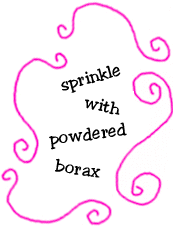 Q Dear Miss Abigail:
Q Dear Miss Abigail:
We recently moved into a new home that we built. We have beautiful carpet that cost a lot, and I worry constantly that it will get dirty. I want all guests to remove their shoes. Most of my family won’t abide by this, and my husband says its not right to ask them to, that it’s just carpet. We are having Christmas at our home this year and I am very worried. Stupid, huh? Some agree with me, but most people say it’s rude for me to invite people in then expect to do this, that it’s makes them uncomfortable. Dear Abby says that if you invite guests, you invite their shoes. Please help. I’m too obsessed with this. I think that my inlaws refuse just to spite me because it worries me so. Thanks.
Signed,
Missy
A Dear Missy:
I’m afraid I’ll have to side with your husband, Dear Abby, and all those who feel uncomfortable by your request. It is awfully strange to appear shoeless in someone else’s home. Perhaps if everyone had perfect, new socks and toenail fungus was not an issue, things would be different.
But Missy, there is hope. Have you forgotten that as long as people have been tracking in mud and spilling cocktails, homeowners have been practicing the fine art of stain removal? Here are some tips from America’s Housekeeping Book, which was compiled by the New York Herald Tribune Home Institute in 1941. Good luck, relax, enjoy your carpet and your company!
1941: Common Stains on Rugs and Carpets
![]() Removing spots and stains from rugs is complicated by the fact that a pad cannot be used underneath to absorb the soil loosened by the reagent. However, clean white blotting paper can be applied to the surface after using the reagent, to blot up excess moisture and soil.
Removing spots and stains from rugs is complicated by the fact that a pad cannot be used underneath to absorb the soil loosened by the reagent. However, clean white blotting paper can be applied to the surface after using the reagent, to blot up excess moisture and soil.
Old stains or stains made by fruits, medicine, dyes, etc., must be given professional treatment.
When soap and water are used for spot removal, be careful not to get the rug too wet. Be sure to rinse thoroughly, and to brush the pile erect while it is damp.
| Type of Stain | Treatment for Removal |
|---|---|
| Animal Stains | Treat Immediately. Sponge with salt solution (1/4 cup salt to 1 pint water), then sponge with ammonia solution (1 part ammonia to 20 parts water). Specific cleansers for animal stains are available. |
| Blood | Blot up as much as possible with clean blotting paper or absorbent cloth, being careful not to spread stain. Sponge with a cloth dampened with cold water. Brush pile erect while still damp. |
| Candle Wax | Scrape off as much as possible with a spatula or dull knife. Sponge with carbon tetrachloride. |
| Candy | Sponge with clear warm water. |
| Chewing Gum | Rub with piece of ice until gum gathers in a ball. Sponge any remaining traces with carbon tetrachloride. |
| Chocolate | Scrape off excess with spatula or dull knife. Sprinkle with powdered borax, moisten with cold water. Remove with damp cloth. Brush up borax when dry. |
| Cocktails | Sponge at once with cloth wrung out of mild soapsuds. Rinse with cloth wrung out of clear water. Brush pile erect while damp. Fruit juice cocktail stains are difficult to remove and may require professional treatment. |
| Coffee and Tea ~ Clear | Sponge with cloth wrung out of mild soapsuds. Rinse with cloth wrung out of clear water. |
| Coffee and Tea ~ With cream | Sponge with carbon tetrachloride. |
| Grease and Oil | Sponge with carbon tetrachloride. If color remains the spot will require professional treatment. |
| Ink | Blot up as much as possible with clean blotting paper or absorbent cloth, being careful not to spread the stain. Sponge with lukewarm water. Sponging with milk is effective for some kinds of ink, but the milk must be removed by sponging with carbon tetrachloride. Stubborn ink stains require professional treatment. |
| Milk | See Grease. |
| Mud | Allow to dry thoroughly, then brush out. |
| Paint | If fresh, sponge with turpentine. Old or stubborn paint stains require professional treatment. |
| Salad Dressing | See Grease. |
![]()
Source: New York Herald Tribune Home Institute, compiler. America’s Housekeeping Book. New York: Charles Scribner’s Sons, 1941.
~ pp. 182-83 ~